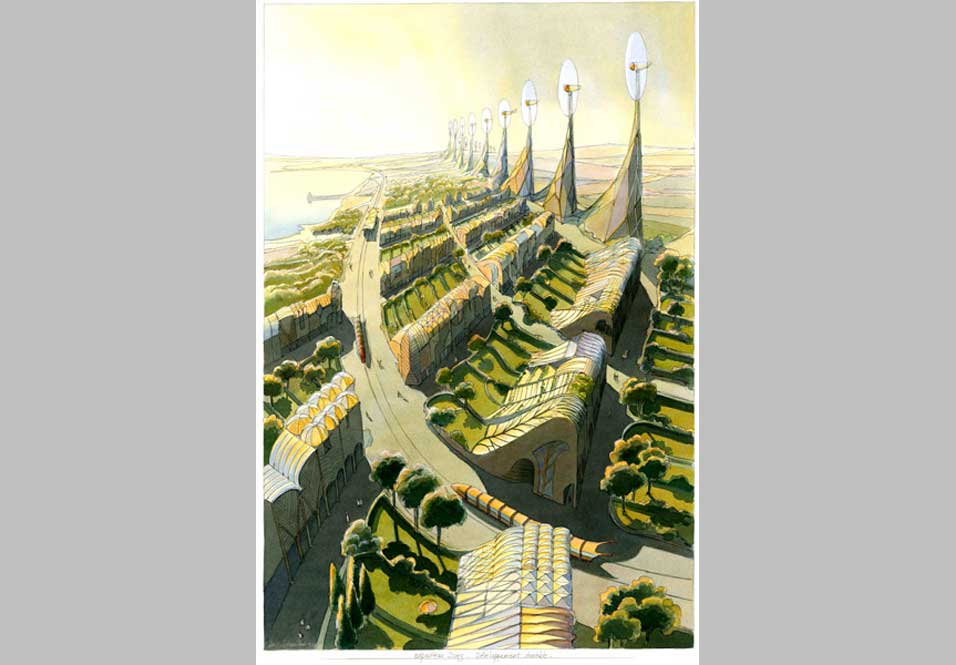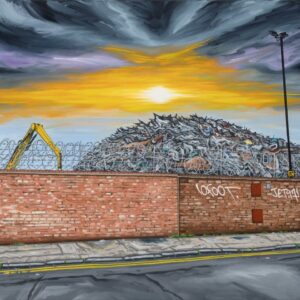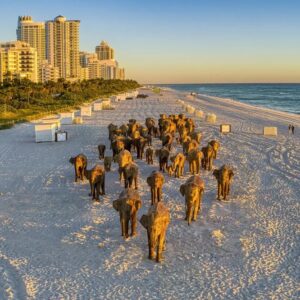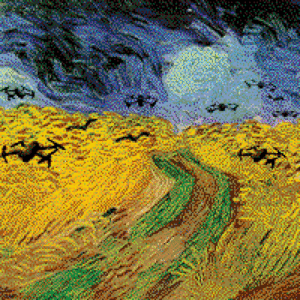
Cinquantenaire Museum (Royal Museums of Art and History) presents Vegetable City: Luc Schuiten’s Vision of a Sustainable Future, on view through August 30, 2009. The deterioration of our environment, the weather changes and the damage made to biodiversity increasingly give way to negative and stressful visions of a planet’s integrity affected by human aggression. Based on the outlines of solutions already given by bio-mimetism, Luc Schuiten offers on the contrary utopian visions that suggest we group together around positive creativity and invent spaces that represent one of the fundamental principles of life: life creates conditions favourable to life.
From Brussels to the Lotus housing estate: Sustainable development does not entail the destruction of the existing patrimony but rather the integration of new ideas. In a utopian Brussels for example, adding to the existing buildings external envelopes and transplants, made in vegetable structures and in bio-mimetic materials transmits the idea of a needed change in the way habitat functions and in consumer habits. New pedestrian passages are developed on the roof-gardens. The encounter between Luc Schuiten and movie director François Vives gave birth to cité Lotus, imagined during the shooting of a movie on the lotus flower in Japan. Whether due to the hydrophobic properties of its leaves or the qualities of its internal structures, the lotus, symbol of spirituality, is a source of learning. Its resistance to bad weather and its physiologic properties are other paths to explore. One example is the technical adaption of the opening and closing system of its petals, that could allow fo r the storing and management of the methane gas produced by the estate’s organic waste.
Other housing estates: At the Vagues estate, one quarter of the area around the lake is inhabited, while the rest is occupied by a forest in its maturity, thus allowing the development of new buildings. The young, maturing forest covers the largest part of the territory, closely watched over by the gardener- architects. Finally, dead trees occupy the last part of the area, and the humus resulting from their decomposition is used to enrich the land of the new forests. This estate functions like a super organism with characteristics of self-regulation, of homeostasis and metabolism. At the Habitarbres estate, the external walls that form the facades have a layer made of translucent or transparent proteins, inspired by the chitin on the wings of dragonflies. The slabs on the floor and the internal walls are made of by known techniques of stabilised earth using lime and strengthened with vegetable structures. The natural ventilation of the buildings is copied on the mo del of termites’ nests. The residences are lit at night by bioluminescence, imitating the process used by glow-worms or certain abyssal fish.
New technologies: Urbacanyon is built in a new sort of silicate concrete, in a rock-looking formwork. The production of this transparent material, from the interior of the constructions is traced on the bio-mineralisation used by molluscs to make their shell. In Luc Schuiten’s projects, people move about on cycles, individual vehicles moved mainly by muscular energy with an electric assistance on demand, or on ornitho-planes, sort of airships. The surface of the membranes they are made with captures the solar energy and transforms it into electricity to feed the electric motors by moving the propellers and causing the wings to move. In the cartoon-strip Carapaces, done together with his brother François, Luc Schuiten has created a whole imaginary estate based on the use of renewable energies. Solar town-planning is inspired from the traditional constructions of the Indians of New-Mexico: the pueblo. A series of new technologies is transplanted on the basic str ucture of this ancestral know-how, such as removable hot houses, as well as the town centre marked by a pyramid shaped arrow of solar panels, topped by a very big windpump.



